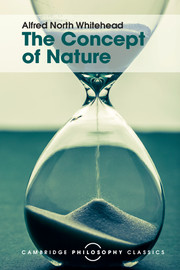4 - The method of extensive abstraction
Published online by Cambridge University Press: 05 November 2015
Summary
To-day's lecture must commence with the consideration of limited events. We shall then be in a position to enter upon an investigation of the factors in nature which are represented by our conception of space.
The duration which is the immediate disclosure of our sense-awareness is discriminated into parts. There is the part which is the life of all nature within a room, and there is the part which is the life of all nature within a table in the room. These parts are limited events. They have the endurance of the present duration, and they are parts of it. But whereas a duration is an unlimited whole and in a certain limited sense is all that there is, a limited event possesses a completely defined limitation of extent which is expressed for us in spatio-temporal terms.
We are accustomed to associate an event with a certain melodramatic quality. If a man is run over, that is an event comprised within certain spatio-temporal limits. We are not accustomed to consider the endurance of the Great Pyramid throughout any definite day as an event. But the natural fact which is the Great Pyramid throughout a day, meaning thereby all nature within it, is an event of the same character as the man's accident, meaning thereby all nature with spatio-temporal limitations so as to include the man and the motor during the period when they were in contact.
We are accustomed to analyse these events into three factors, time, space, and material. In fact, we at once apply to them the concepts of the materialistic theory of nature. I do not deny the utility of this analysis for the purpose of expressing important laws of nature. What I am denying is that anyone of these factors is posited for us in sense-awareness in concrete independence. We perceive one unit factor in nature; and this factor is that something is going on then—there. For example, we perceive the going-on of the Great Pyramid in its relations to the goings-on of the surrounding Egyptian events.
- Type
- Chapter
- Information
- The Concept of NatureTarner Lectures, pp. 49 - 64Publisher: Cambridge University PressPrint publication year: 2015
- 1
- Cited by



